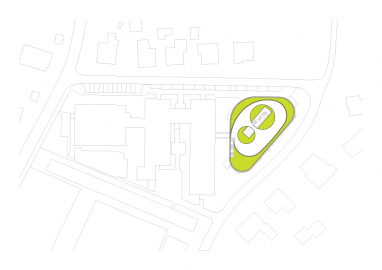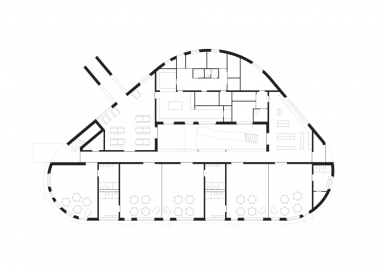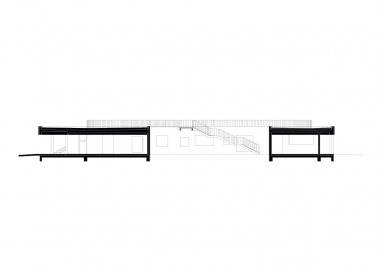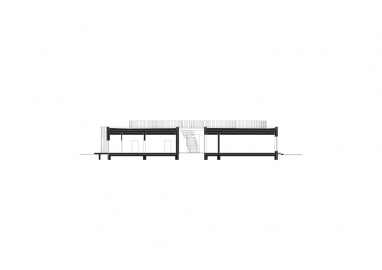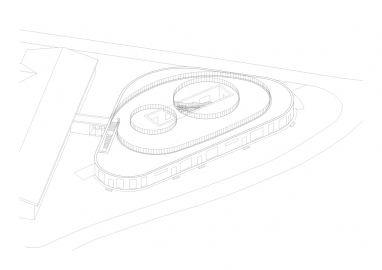Kindergarten in Kleszczówka
Pre-school education is one of the most important stages in human development, so we should carefully care for the quality of space in which this process takes place. Children can not be underestimated and served only colored interiors. A child is a serious, sensitive recipient who puts the highest demands on the designer.
A small parcel of irregular shape similar to a triangle, imposed rather two-storey solutions. Instead, we decided to have a one-story building with rounded corners, which filled almost all of the possible surface, and for outdoor play we designed a large roof terrace.
To provide access to daylight to all rooms and communication spaces, we put a rectangular atrium into the center of the kindergarten, a piece of the outside world into which snow and rain fall and constantly changing sunlight.
A wood-covered terrace with two round green islands in the middle encourages children to run along other tracks. Outside the terrace, the roof surface is covered with ornamental grasses. It is a pity that during the construction we could not keep old acacias at the border of the plot, which would partly shade the terrace. You will have to wait for a few years for new trees.
The lining of the vertical boards was also covered with external walls. The walls and roof will naturally grow old, the trees grow and the grass will thicken. The functioning and aging of a building in the perspective of years is also for us more important then its appearance at the begining.
-A five-branch kindergarten was established in the Kleszczówka district in the suburbs of Żory as the extension of a one-story school made in a steel structure covered with sandwich panels. The immediate environment is dominated by chaotic single-family buildings. A little further you can meet small clusters of four-storey blocks and industrial areas that give character to the whole district. In this environment, the kindergarten is one of the few objects that try to give the space a new quality.
-The shape of the building - a triangle with rounded corners and irregular perforation of the walls determined the choice of cast concrete at the construction site for the construction of external walls. The mineral wool enabled precise warming of the arched walls tightly filling the layer of a wooden substructure to fasten the outer cladding of the vertical planks. The wall line remains fluid.
Reinforced concrete walls work perfectly with a ground heat exchanger and heating and ventilation systems, constituting an excellent heat and cold compensator. Mineral wool protects the building from the loss of energy outside and its excessive acquisition during the summer. Moisture, which could trace up in the thermal insulation layer, through the vapor-permeable foil and the ventilation gap is discharged to the outside. This slit simultaneously ventilates the wooden cladding and provides a layer that further prevents the object from overheating. Wool as a completely non-flammable material reduces the fire risk to a minimum.

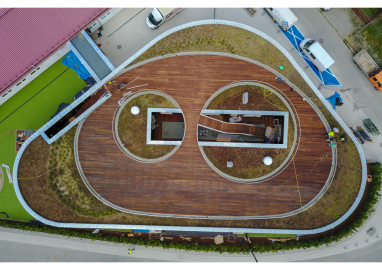 © Wojciech Bęczarski
© Wojciech Bęczarski
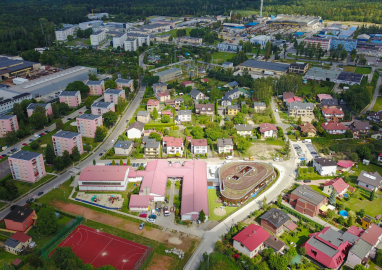 © Wojciech Bęczarski
© Wojciech Bęczarski
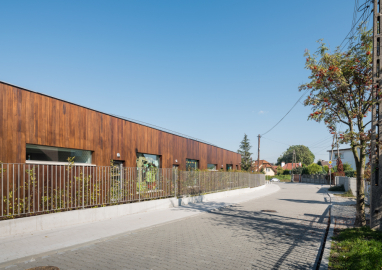 © Juliusz Sokołowski
© Juliusz Sokołowski
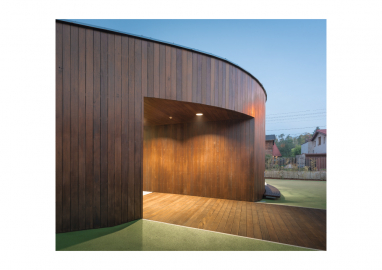 © Juliusz Sokołowski
© Juliusz Sokołowski
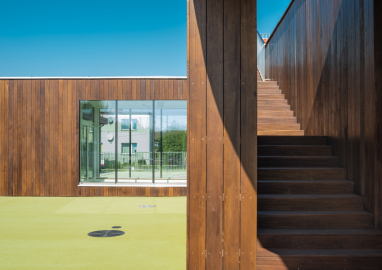 © Juliusz Sokołowski
© Juliusz Sokołowski
